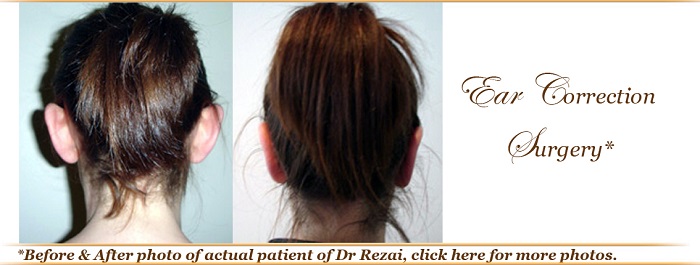Ear reshaping surgery explained by EPCSG and how protruding ears can eliminate embarrassment and stress in children and adults.
13 November 2014
| Last updated on 4 June 2018
Few surgical procedures are as satisfying to patients as ear reshaping surgery, known as otoplasty. Around the age of five or six, children regularly become aware of their prominent ears and are frequently teased at school by their peers. Otoplasty is almost always successful in correcting this deformity and has a positive psychological impact not only on children but also on their parents!
Over 1% of the UK population believes that their ears stick out too much. Having protruding ears will rarely affect a person’s hearing but will frequently cause embarrassment and psychological distress. Ears are one of the first parts of the body to develop to full adult size, so if they protrude they can be particularly noticeable in children and this regularly leads to teasing or bullying. Indeed the fear of their child being bullied will often result in the parents being even more concerned than the child.
There is a family of rare congenital ear deformities where the rim of the ear is flattened and the upper portions deformed. In such Stahl Ear Deformity, the skin and cartilage are folded to different degrees that can result in a pointed upper edge. Because of the resemblance to the ears of the character in the popular television series, this condition is sometimes also known colloquially as Spock Ear, Vulcan Ear or simply Pointed Ear. It can appear in many degrees from mild to severe, but is more frequently found in those of Oriental origin than in Caucasians.
There are various solutions available to correct ear deformity and the options are discussed here by Dr Allen Rezai, Senior Consultant Plastic and Reconstructive Surgeon of Harley Street, London, and leader of Elite Plastic & Cosmetic Surgery Group in Dubai Healthcare City. According to Dr Rezai, “If the problem is identified shortly after birth, then the condition can be treated conservatively, simply by applying an appropriate splint. However, only a few months later, the cartilage of the ear will have become considerably stiffer and the splint may need to be in place for many months, even then not always guaranteeing success. Typically, after the age of six months, the only viable option is surgical correction.”
Dr Rezai goes on to explain that “By the age of about five or six years, the outer ear, known medically as the pinna, has attained around 85% of its adult height and most surgeons recommend waiting until this time to correct prominent ears. However many parents are keen to have the ear correction carried out as early as possible, fearing that their child will be stigmatized at school. Nevertheless it is generally more prudent to wait until the child actually mentions the problem, at which time the effects of ear reshaping surgery on a child's self-image are generally immediate and significant.”
According to Dr Rezai, the procedure for otoplasty surgery in adults is typically performed under either local anesthesia alone, or local anesthesia with sedation. In the case of children, a general anesthetic is usually administered. An incision will be made behind the ear, in the groove between the ear and the side of the head, leaving a scar that is very well-concealed and virtually impossible to find. If the ear lobe is also large, then it is possible to reduce its size during the same operation. The surgery itself takes about 45 minutes and many patients will return home the same day, others staying in hospital overnight. For those engaged in non-physical work, Dr Rezai usually finds that they can return to work within 1 week, and resume normal physical exercise within 2 to 4 weeks.
You might also be interested in...
- Choosing an expert Rhinoplasty surgeon is the key to success
- Yes you can have a facelift without going under the knife!
- Breast Implant Placements and Their Pros and Cons
In many cases, according to Dr Rezai, it is adult patients who are seeking ear reshaping surgery for themselves. They have perhaps been considering it for many years and are now at long last ready to take the plunge, setting out to correct those annoying things about their features that have troubled them perhaps for much of their lives.


























.png?itok=HBSyMDok)
























































































.png?itok=0fOAXkOm)















.png?itok=EH_x0Pha)













